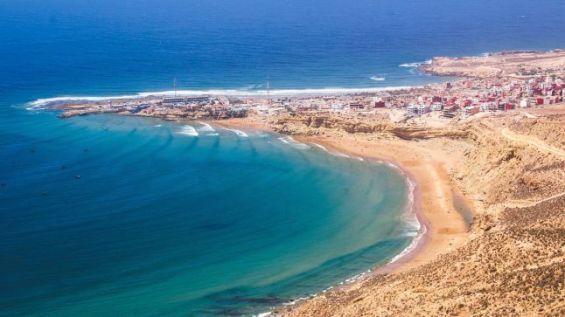Landslides don’t only occur on land; they also happen underwater. A massive underwater landslide that occurred around 60,000 years ago off the coast of Morocco stands as proof of this. Scientists from Germany have studied this landslide, which took place near Agadir.
According to their research titled «Extreme erosion and bulking in a giant submarine gravity flow», published in the peer-reviewed journal Science Advances in August, this submarine avalanche was even larger than those recorded on land.
The event, known as the Agadir Canyon landslide, is believed by scientists to be one of the largest gravity flows ever recorded. Known as the «Bed 5 event», it occurred around 60,000 years ago.
An underwater avalanche
Through the analysis of acoustic data and sediment cores, scientists traced the flow from its origin to its final deposit. They estimate that the initial failure volume was about 1.5 km³, but as the flow traveled 450 km down the canyon, it grew to an enormous 162 km³ by entraining sediment along the way.
«The small initial failure (~1.5 cubic kilometers) entrained over 100 times its starting volume, catastrophically evolving into a giant flow with a total volume of ~162 cubic kilometers and a run-out distance of ~2000 kilometers», wrote the scientists who had believed these types of landslides always started large.
 Overview map of the Northwest African margin showing the pathway of the Bed 5 event and its erosional marks on the seafloor. / Ph. Science Advances
Overview map of the Northwest African margin showing the pathway of the Bed 5 event and its erosional marks on the seafloor. / Ph. Science Advances
This finding underscores the immense scale and power of submarine gravity flows in shaping the ocean floor. «From these data, we correlate the deposits of one of the largest gravity flow events on Earth, from its source in the canyon head through to the Canyon Mouth, and map its destructive, erosional pathway downslope», reads the scientific paper.
The landslide was so powerful that it carved a massive path in the ocean floor. «It is ~450 km in length, up to 30 km in width, and 1.2 km in depth», the scientists wrote.
For context, the only other large underwater landslides documented are those at Canada's Bute Inlet and Africa's Congo Canyon. However, they are small compared to the one in Morocco. For example, the Congo Canyon flow grew by entraining around 2.65 km³ of sediment, enabling it to travel over 1,000 km.





 chargement...
chargement...













